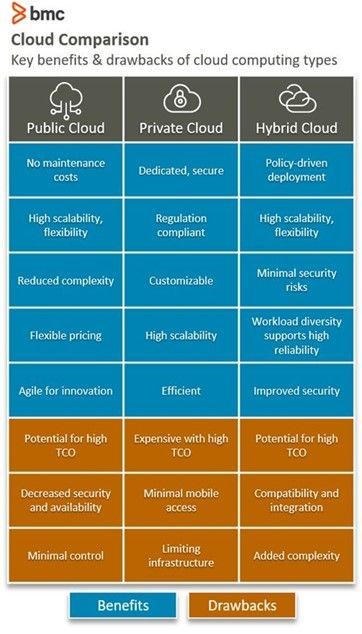In today’s digital age, cloud computing has become an essential part of businesses’ operations. Whether you’re a small startup or a large enterprise, choosing the right type of cloud deployment model is crucial. Two popular options are public and private clouds. In this article, we will explore the key differences between these two models to help you make an informed decision for your business.
What is a Public Cloud?
A public cloud is a type of cloud computing that is hosted and managed by third-party cloud service providers. These providers offer resources such as virtual servers, storage, and networking to multiple clients over the internet. Public clouds are typically pay-as-you-go and offer scalability, flexibility, and cost-effectiveness.
What is a Private Cloud?
A private cloud, on the other hand, is a cloud infrastructure that is dedicated to a single organization. It can be hosted either on-premises or by a third-party provider. Private clouds offer greater control, security, and customization compared to public clouds. While they may require a higher upfront investment, private clouds are ideal for organizations that prioritize data privacy and compliance.
Key Differences
1. Security and Privacy
One of the main differences between public and private clouds is security and privacy. In a public cloud, your data is stored on shared servers along with other clients’ data. While public cloud providers implement robust security measures, there is always a risk of data breaches or unauthorized access. Private clouds, on the other hand, offer greater control over security protocols and data encryption, making them ideal for organizations with strict compliance requirements.
2. Customization and Control
Private clouds provide organizations with a higher degree of customization and control over their infrastructure. You can tailor the cloud environment to meet your specific requirements, choose the hardware and software configurations, and implement security policies according to your organization’s needs. In contrast, public clouds have standardized configurations and limited customization options.
3. Performance and Reliability
Private clouds often offer better performance and reliability compared to public clouds. Since you have dedicated resources in a private cloud, you can optimize the infrastructure for your specific workloads and applications. This results in improved speed, uptime, and overall performance. Public clouds, while highly scalable and cost-effective, may experience performance fluctuations due to shared resources.
Choosing the Right Model
When deciding between a public and private cloud, consider your organization’s needs, budget, and level of control required over your data. If you prioritize cost-effectiveness, scalability, and flexibility, a public cloud may be the right choice for you. However, if security, privacy, customization, and performance are top priorities, a private cloud may be more suitable.
Conclusion
In conclusion, understanding the key differences between public and private clouds is essential for making an informed decision for your business. While both models offer unique benefits, it’s important to weigh the advantages and disadvantages based on your organization’s specific requirements. Whether you choose a public or private cloud, leveraging cloud computing technology can help drive innovation, improve efficiency, and drive business growth.
